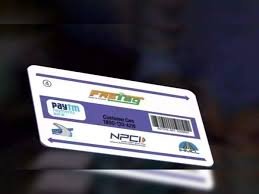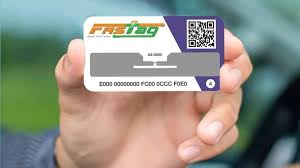RBI Adds FASTag & NCMC Auto-Replenishment to E-Mandate Framework
Introduction to the New RBI Directive
The Reserve Bank of India (RBI) has recently introduced an important update to its e-mandate framework by incorporating the FASTag and National Common Mobility Card (NCMC) auto-replenishment feature. This move is set to streamline transactions and enhance convenience for users. The updated framework will facilitate automatic fund replenishment for FASTag users and NCMC cardholders, ensuring seamless transactions without manual intervention.
Details of the Update
The new RBI directive mandates that financial institutions integrate auto-replenishment mechanisms for FASTag and NCMC transactions. FASTag, a device used for electronic toll collection, and NCMC, which serves as a multi-purpose card for various transportation services, will now benefit from this automated process. This update is expected to reduce transaction failures and improve the overall efficiency of electronic payments in the transportation sector.
Benefits of the Auto-Replenishment Feature
The integration of auto-replenishment into the e-mandate framework offers several benefits. For FASTag users, it eliminates the need to manually top up their accounts, reducing the risk of delays and ensuring uninterrupted toll payments. Similarly, NCMC cardholders will experience smoother transactions across different modes of transport. This feature not only enhances user convenience but also supports the broader goal of promoting digital payments and reducing cash transactions.
Impact on Financial Institutions and Users
Financial institutions will need to update their systems to accommodate the new auto-replenishment feature. This may involve technical adjustments and additional compliance measures. For users, the change means greater ease of use and fewer disruptions in their transactions. It aligns with the RBI’s ongoing efforts to modernize payment systems and promote financial inclusion through technology-driven solutions.
Future Implications and Developments
This update is part of a broader initiative by the RBI to enhance the digital payment ecosystem in India. Future developments may include further integrations and improvements to ensure that the digital payment infrastructure remains robust and user-friendly. The RBI’s focus on incorporating advanced technologies reflects its commitment to advancing financial inclusion and efficiency in the country’s payment systems.

Why this News is Important
Enhancing Transaction Efficiency
The RBI’s update to include auto-replenishment for FASTag and NCMC cards addresses common issues faced by users in managing their digital payments. By automating the replenishment process, the new framework reduces manual intervention, which can often lead to transaction failures or delays. This enhancement is crucial for maintaining the smooth functioning of electronic toll collections and multi-purpose transportation cards.
Supporting Digital Payment Growth
This directive aligns with the RBI’s broader vision of fostering digital payments and reducing reliance on cash transactions. By integrating auto-replenishment into existing frameworks, the RBI is supporting the growth of digital payment systems. This move not only benefits individual users but also contributes to the overall efficiency and reliability of the country’s financial infrastructure.
Improving User Convenience
For FASTag and NCMC cardholders, the auto-replenishment feature simplifies the payment process, making it more convenient and less prone to errors. This user-centric approach is expected to enhance the overall experience of digital payment systems, encouraging more people to adopt and rely on these technologies.
Streamlining Financial Institution Operations
Financial institutions will benefit from streamlined operations as a result of the RBI’s directive. The auto-replenishment feature can lead to reduced customer service queries and operational burdens related to manual top-ups. This improvement supports the institutions’ efficiency and helps them provide better services to their clients.
Aligning with Global Payment Trends
By updating its e-mandate framework, the RBI is aligning India’s payment systems with global trends toward automation and digitalization. This alignment ensures that India remains competitive in the global financial landscape and meets the evolving expectations of users and stakeholders.
Historical Context:
Evolution of E-Mandate Framework
The concept of e-mandates has evolved significantly over the years. Initially, e-mandates were introduced to facilitate automatic payments for various services, simplifying the transaction process for users. The RBI has continuously updated its framework to incorporate new technologies and address emerging challenges.
The introduction of FASTag and NCMC cards was part of the RBI’s broader initiative to promote digital payments and reduce the reliance on cash transactions. FASTag, launched in 2014, was aimed at automating toll payments on highways, while NCMC, introduced in 2019, was designed to provide a universal payment solution for multiple transportation modes. The recent update to include auto-replenishment in the e-mandate framework is a natural progression in this ongoing effort to enhance the efficiency and convenience of digital payments.
Key Takeaways from RBI’s FASTag & NCMC Auto-Replenishment Update
| # | Key Takeaway |
|---|---|
| 1 | The RBI has updated the e-mandate framework to include auto-replenishment for FASTag and NCMC cards. |
| 2 | The auto-replenishment feature aims to enhance transaction efficiency and reduce manual intervention. |
| 3 | Users of FASTag and NCMC cards will benefit from smoother, uninterrupted transactions. |
| 4 | Financial institutions will need to update their systems to comply with the new directive. |
| 5 | This update supports the RBI’s goal of promoting digital payments and reducing cash transactions. |
Important FAQs for Students from this News
1. What is the new update introduced by the RBI for FASTag and NCMC?
The RBI has updated its e-mandate framework to include an auto-replenishment feature for FASTag and National Common Mobility Card (NCMC) transactions. This change allows automatic fund replenishment, improving transaction efficiency and user convenience.
2. How does the auto-replenishment feature benefit FASTag users?
FASTag users benefit from the auto-replenishment feature as it eliminates the need for manual top-ups. This ensures uninterrupted toll payments, reducing the risk of transaction failures and delays at toll booths.
3. What are the advantages of the auto-replenishment feature for NCMC cardholders?
NCMC cardholders will experience smoother transactions across various modes of transport, as the auto-replenishment feature eliminates manual intervention. This results in a more convenient and reliable payment experience.
4. How will financial institutions be affected by the new RBI directive?
Financial institutions will need to update their systems to integrate the auto-replenishment feature. This may involve technical adjustments and additional compliance measures to accommodate the new requirements.
5. What is the RBI’s broader goal with this update?
The RBI aims to promote digital payments and reduce reliance on cash transactions. By incorporating auto-replenishment into the e-mandate framework, the RBI supports the growth of digital payment systems and enhances overall efficiency.
Some Important Current Affairs Links


















